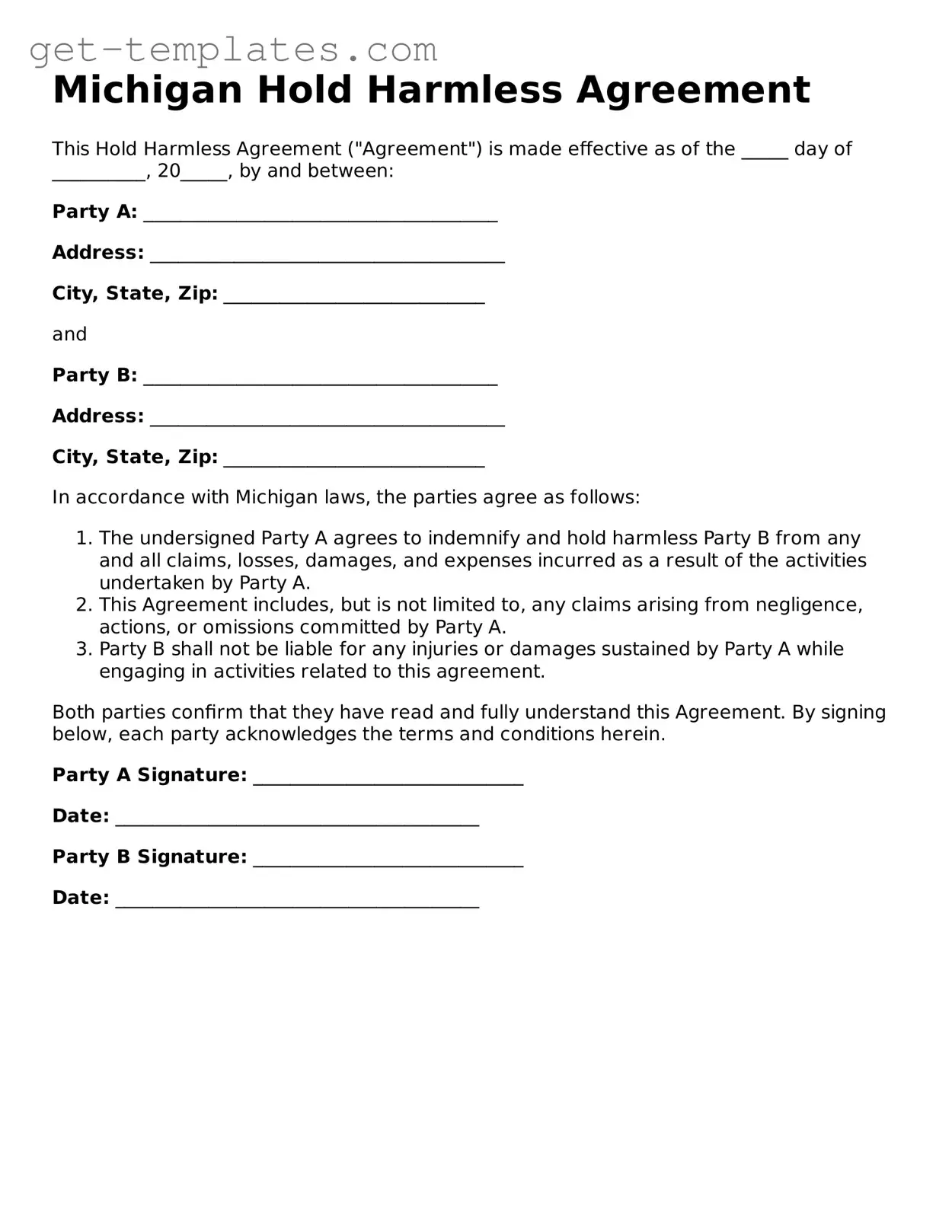Michigan Hold Harmless Agreement
This Hold Harmless Agreement ("Agreement") is made effective as of the _____ day of __________, 20_____, by and between:
Party A: ______________________________________
Address: ______________________________________
City, State, Zip: ____________________________
and
Party B: ______________________________________
Address: ______________________________________
City, State, Zip: ____________________________
In accordance with Michigan laws, the parties agree as follows:
- The undersigned Party A agrees to indemnify and hold harmless Party B from any and all claims, losses, damages, and expenses incurred as a result of the activities undertaken by Party A.
- This Agreement includes, but is not limited to, any claims arising from negligence, actions, or omissions committed by Party A.
- Party B shall not be liable for any injuries or damages sustained by Party A while engaging in activities related to this agreement.
Both parties confirm that they have read and fully understand this Agreement. By signing below, each party acknowledges the terms and conditions herein.
Party A Signature: _____________________________
Date: _______________________________________
Party B Signature: _____________________________
Date: _______________________________________
